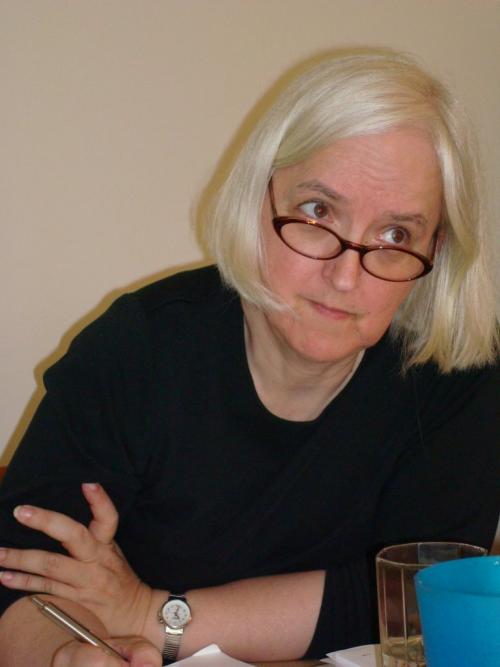How University Presses Are Forging A Future in Eleven Links
July saw a number of new appointments and shifts at university presses. Dawn Durante, formerly of the University of Illinois Press, was named Editor in Chief of the University of Texas Press. Durante earned her Master's degree at Arizona State University, writing a thesis on ebooks and peer review, and simultaneously received a Graduate Certificate in Scholarly Publishing.
Another news piece, appearing in Crain's Detroit Business, covered the appointment of Stephanie Williams as the new Director of Wayne State University Press. Williams joins that press from Ohio University Press and currently serves on the board of the Association of University Presses (AUPresses), a NISO member organization.
A third news story was the announcement of a change in reporting structure for the University of Tennessee Press. On July 6, the Press became a division of the University of Tennessee, Knoxville Libraries. The announcement trumpets the key role played by the press: “UT Press is the state’s book publisher. The press was established in 1940 by the UT trustees with a mandate to stimulate scholarly research, to publish worthy projects about the South, and to share these studies with a large readership.”
The vibrancy of university presses is made clear in a fact sheet from AUPresses. Approximately 12,400 titles are published annually by its 155 members. Approximately 333,000 titles are in print from university presses. Most notably, 81 major research institutions in both the US and Canada host both an ARL member library and an AUPresses member press.
As an additional indicator of the importance of university presses, the National Endowment for the Humanities awarded more than $1 million in CARES Act economic stabilization grants to 10 university presses. The projects supported include the Recovering the US Hispanic Literary Heritage Project (University of Houston); the production of ebooks on Indigenous and LatinX Studies (University of Arizona); and the completion of Cornell University’s Open Access in a Closed World project to establish a long-term home for their published OA materials in the humanities and social sciences. Other presses receiving such grants include Baylor University Press, Gallaudet University Press, Louisiana State University Press, the Ohio State University Press, University Press of Mississippi, the University of North Carolina Press, and the University of Notre Dame Press.
Innovation is a necessity for these presses. Their activities are an integral part of the academic ecosystem and research flow, yet their parent institutions, hard-hit by the 2020 pandemic, may be less able to extend subsidies, if needed. Facing similar budget constraints, those acquisition librarians tasked with purchasing for academic libraries will likely buy fewer monographs over the next two to three years. In forging their future, university presses are revisiting what they do, looking at their values, their business models and their infrastructure.
In an early 2020 warning about the impact of the pandemic, information studies researcher Samuel A. Moore of Coventry University noted that:
“...publishing can be done much cheaper, but at what cost? OA has always had a difficult relationship with austerity and its tendency to devalue the skilled labour of those involved in the publishing process. While there is a nuanced conversation to be had about the costs of publishing and the ways of valuing this labour, this conversation will be much harder to have during an economic depression in which there are continual pressures to ‘do more with less.’”
Less than a month later, a similar cautionary piece appeared in Nature, written by Amy Brand of the MIT Press, and Claudio Aspesi, an independent consultant based in Switzerland. Those authors noted “the growing ownership of data analytics, hosting, and portal services by large scholarly publishers.” Their final sentences called for the academic community to coordinate their efforts to combat the movement to consolidation and potential monopolization immediately.
In a June post appearing on the London School of Economics blog, Kaitlin Thaney, Executive Director of Invest in Open Infrastructure, wrote of the resilience needed by publishing service providers if they are to survive the long term effects of the pandemic. Noting the innovations represented by preprint servers medRxiv and bioRxiv, and the collaborative usefulness of the CORD-19 open research dataset, Thaney’s post commends academic libraries for the work they’ve done in support of the move to digital platforms. She goes on to call for more rather than less “upfront investment and cross-institutional planning” in open publishing infrastructure “to ensure the research community is prepared for the future.”
Such consideration and planning is taking place. One key initiative is the Next Generation Library Publishing project, intended to improve publishing pathways and choices available to authors, editors, and researchers. The California Digital Library (CDL), a NISO member organization, is one of three principal investigators, alongside Educopia and Strategies for Open Science (Stratos). Serving as partner leads are LYRASIS, the Confederation of Open Access Repositories (COAR), and Longleaf Services. The group has produced two important documents in the first six months of 2020: the first, a white paper entitled Encouraging Adherence to Values and Principles in Scholarly Publishing: A Case for Assessment Strategies and, just released, the accompanying Values and Principles Framework and Assessment Checklist.
Leaders of university presses, whether their press is closely aligned with an institutional library or not, are well-aware that there is much to wrestle with in the coming years. They are actively collaborating on robust strategies for success. For those interested in learning more, NISO is offering a two-part webinar in August, with a segment on August 19 featuring three extraordinary leaders in a discussion of change management and open access monographs. Tune in and learn more from Charles Watkinson of the University of Michigan Press, Barbara K. Pope of Johns Hopkins University Press, and Frances Pinter of the Central European University Press.
